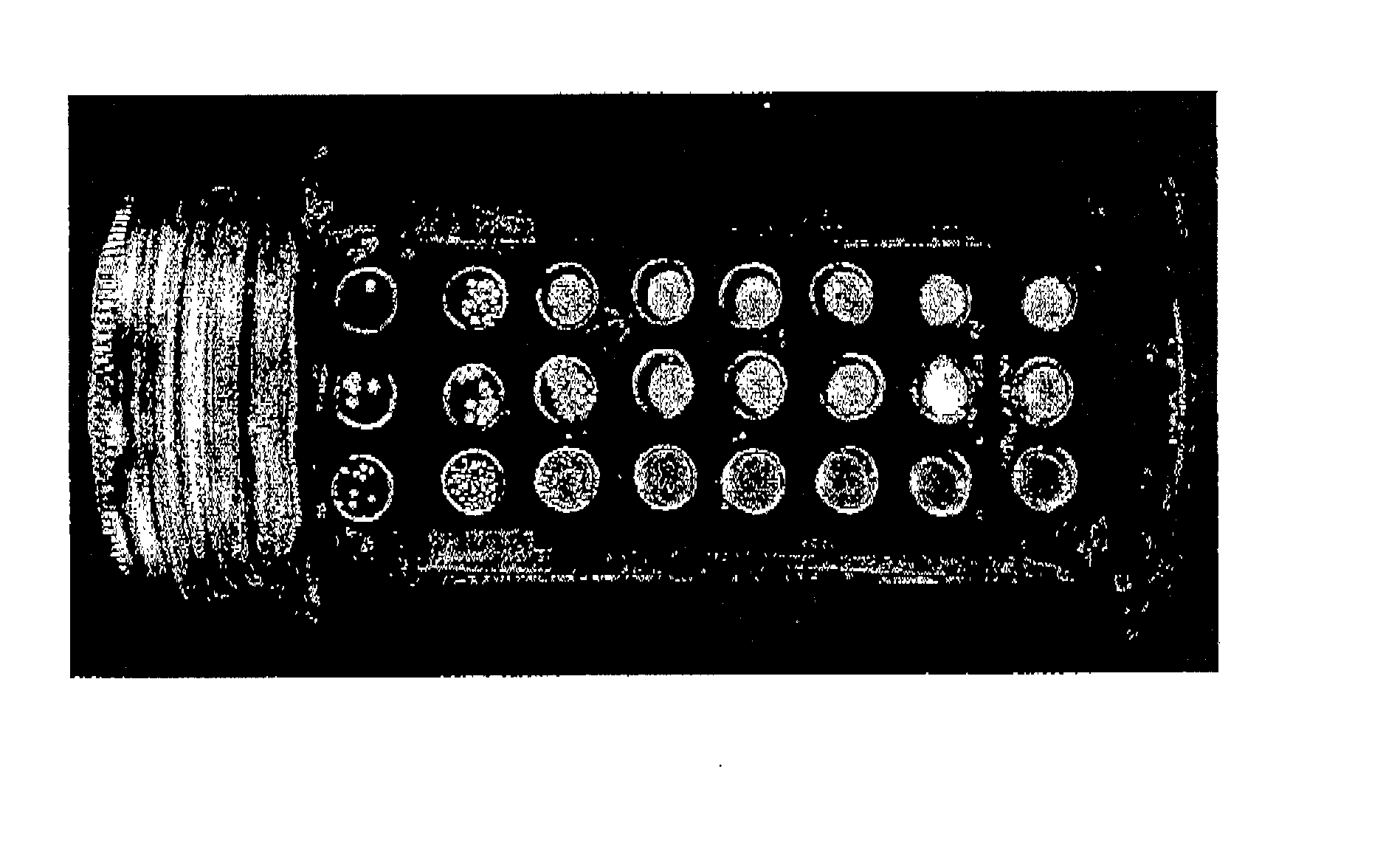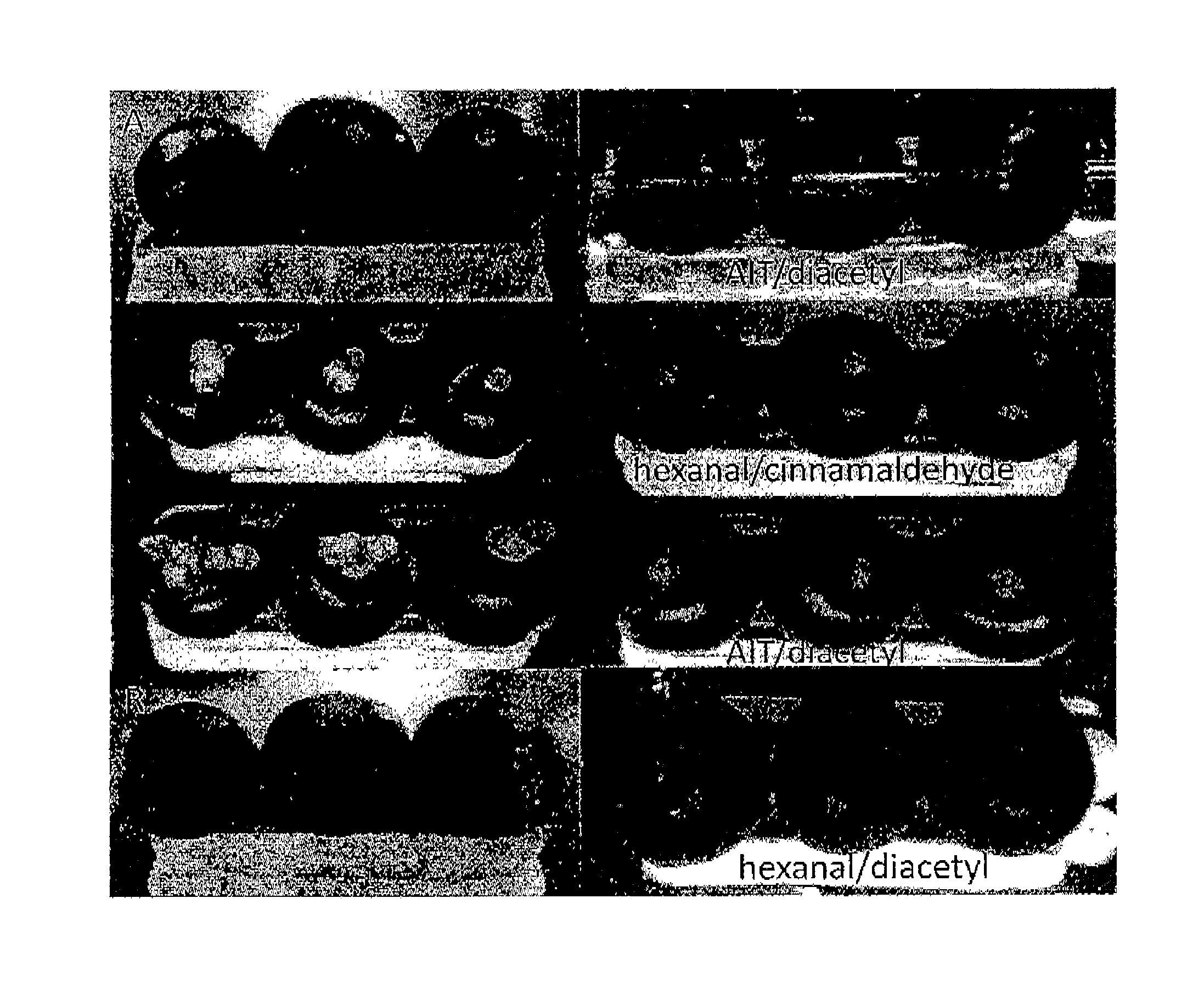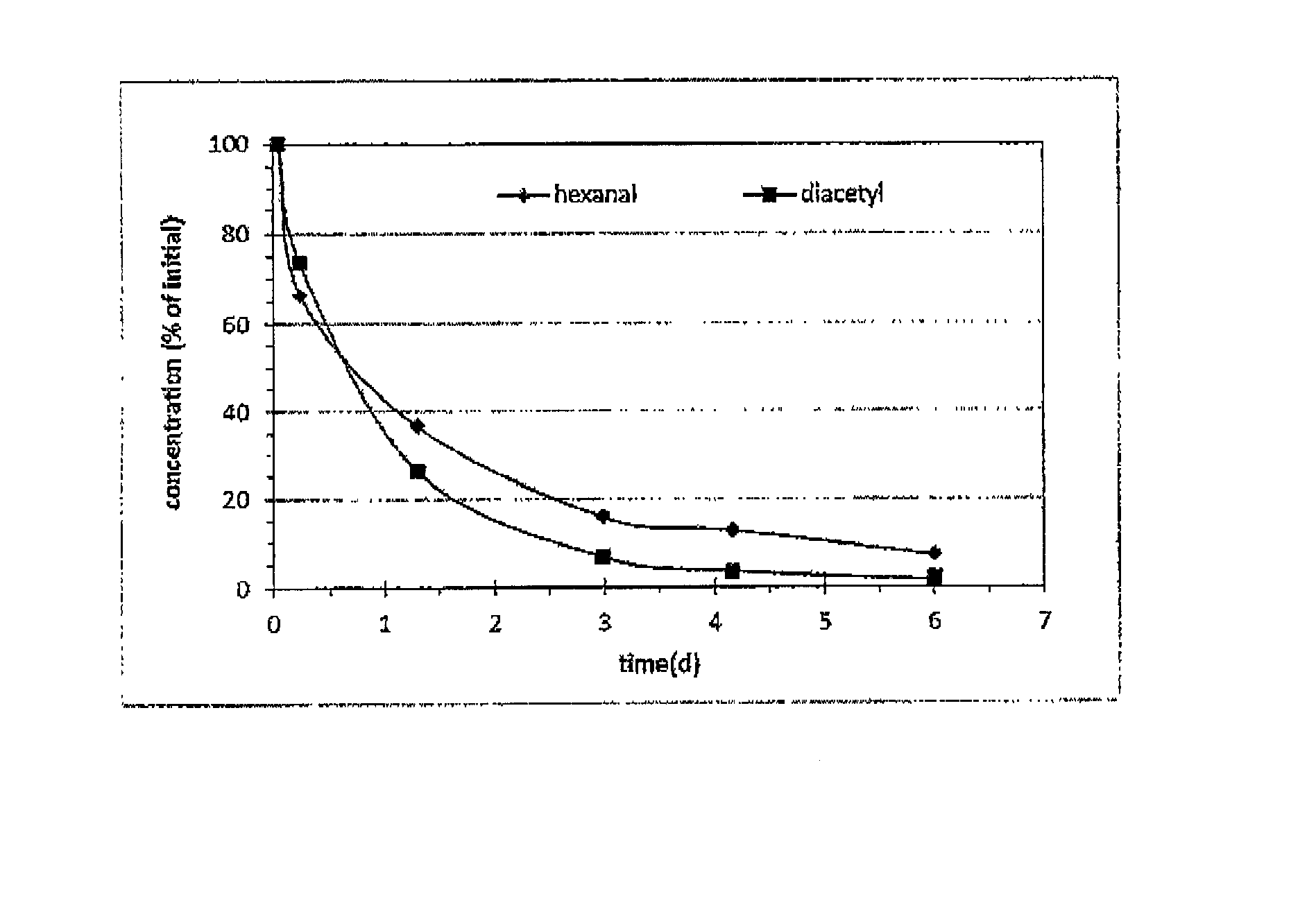Antimicrobial mixtures of an essential oil derived bactericide and an essential oil derived fungicide which extend the shelf-life of perishable agricultural commodities
a technology of essential oil derived fungicide and antimicrobial mixture, which is applied in the direction of anhydride/acid/halide active ingredients, biocide, animal repellents, etc., can solve the problems of deterioration in quality and product loss, deterioration of fungal and bacterial deterioration of fruit, vegetables or flowers, and few options available for controlling bacterial deterioration. , the effect of reducing the risk of infection
- Summary
- Abstract
- Description
- Claims
- Application Information
AI Technical Summary
Benefits of technology
Problems solved by technology
Method used
Image
Examples
example 1
[0047]We have considered the activity of each compound in the gas phase against each class of microorganism at the ranges shown in Table 2. This information was used to prepare mixtures of the compounds designed to inhibit both bacteria and fungi at concentrations that render them applicable to the purpose of shelf-life extension of fresh produce inside hermetically sealed containers.
TABLE 2Concentration ranges of antimicrobial compoundsselected for the formulation of binary mixtureswith effect against both bacteria and fungi.Antimicrobial compoundsConcentration Ranges (ppm)BactericidesCinnamaldehyde20-210Diacetyl1-22acetic acid2-36Fungicidesallyl isothiocyanate0.2-2.0 Hexanal2-25Thymol3-302-nonanone10-200
[0048]The efficacy of the mixtures is measured in a model system consisting of square Mason glass jars (2-litre) fitted with ceramic-lined lids (FIG. 1). Fungal spores or bacteria are applied to the surface of agar disks cut from agar blocks 5 mm thick with a sterile cork borer (13...
example 2
Control of Fungal Agents Responsible for Storage Defects and of Human Pathogens in Tomatoes Using Binary Mixtures of Volatile Antimicrobials
[0051]Visual defects caused by the growth of fungi commonly appear during the storage of tomatoes. These may manifest themselves as white, black or green fungal colonies on the skin or in the stem area caused by several fungal species including: Geotrichum candidum. Alternaria alternata, Rhizopus stolonifer, Botrytis cinerea, Penicillium olsonii and Cladosporium sp. Furthermore, human pathogens are known to occasionally contaminate fresh produce leading to outbreaks of illness or recalls of products from the marketplace. Salmonella spp, and Escherichia coli O157:H7 are the primary human pathogens associated food safety risks in fresh produce, and there is concern that the cold tolerant bacterium Listeria monocytogenes could survive and grow during the distribution of produce through commercial cold chains.
[0052]We measured the antifungal propert...
PUM
| Property | Measurement | Unit |
|---|---|---|
| Temperature | aaaaa | aaaaa |
| Fraction | aaaaa | aaaaa |
| Fraction | aaaaa | aaaaa |
Abstract
Description
Claims
Application Information
 Login to View More
Login to View More - R&D
- Intellectual Property
- Life Sciences
- Materials
- Tech Scout
- Unparalleled Data Quality
- Higher Quality Content
- 60% Fewer Hallucinations
Browse by: Latest US Patents, China's latest patents, Technical Efficacy Thesaurus, Application Domain, Technology Topic, Popular Technical Reports.
© 2025 PatSnap. All rights reserved.Legal|Privacy policy|Modern Slavery Act Transparency Statement|Sitemap|About US| Contact US: help@patsnap.com



